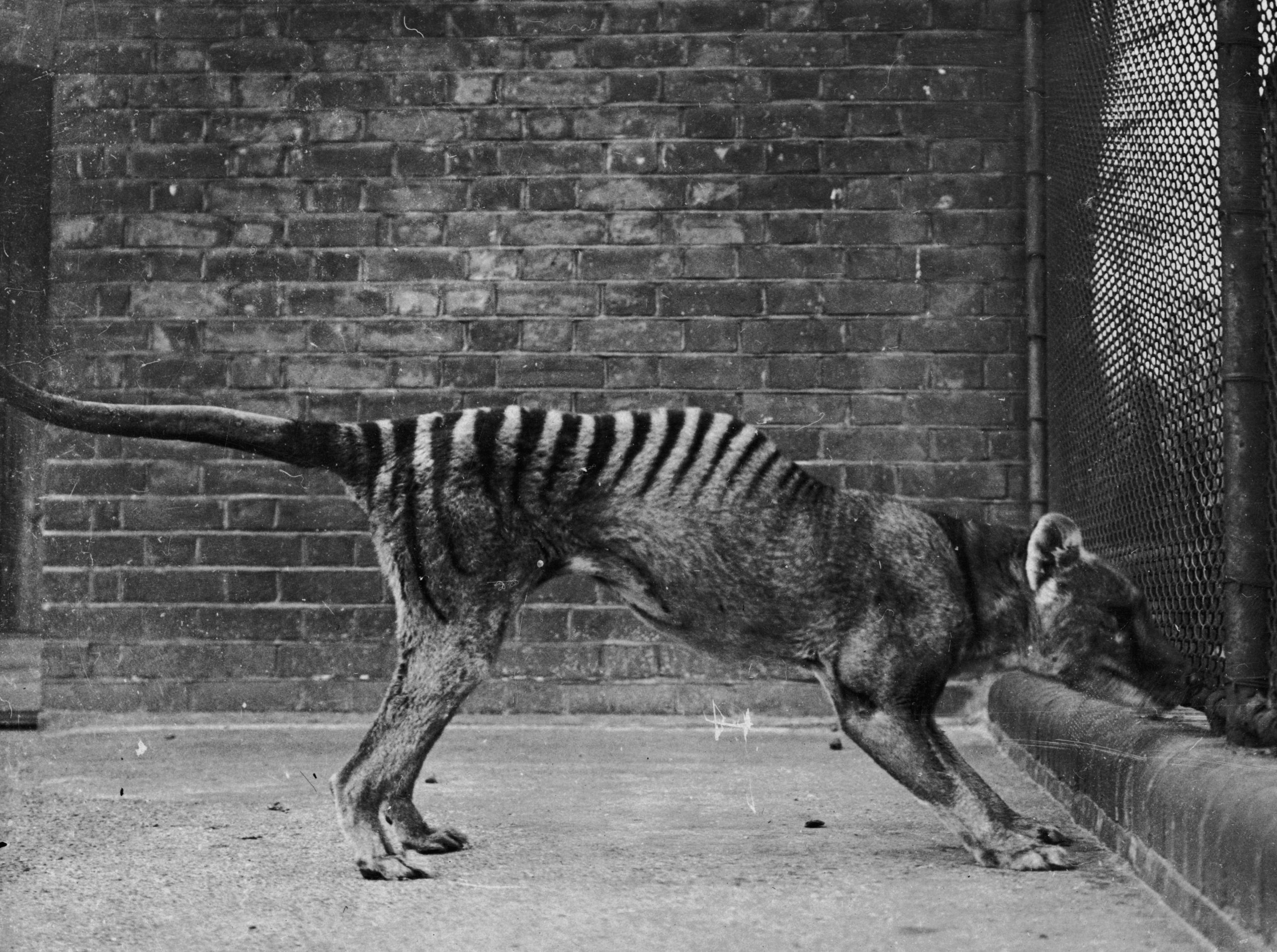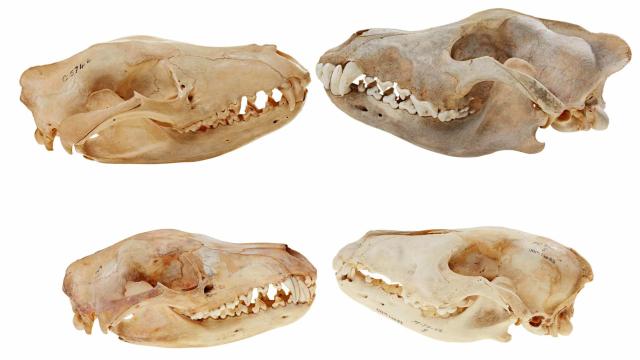The extinct thylacine had the stripes of a tiger, the body of a canid, and the pouch of a kangaroo. These ill-fated, predatory marsupials are a classic example of convergent evolution, in which species independently evolve the same traits, and a new study breaks down just how remarkably similar Tasmanian tigers’ skulls were to those of wolves.
Along with the rest of Marsupialia, the thylacine — popularly known as the Tasmanian tiger — split off from the grey wolf (and the rest of placental mammals) about 160 million years ago. In the long evolutionary trajectory that followed, despite living in different environments, the two animals wound up with very similar developmental adaptations to their skulls, according to a paper published in the journal Communications Biology.
“We found that the thylacine and wolf were more similar to each other than even the thylacine was to its own carnivorous relatives, which just blew our minds,” said Axel Newton, an evolutionary biologist at Monash University in Australia and the paper’s lead author, in a video call. “And that pattern completely trended all the way through development.”
The research team used skulls of wolves (borrowed from the University of Alaska Museum) and thylacines of different ages, to map differences over the course of the species’ development. The wolf was selected as a comparative canid to the thylacine based on previous work that suggested it would be the best candidate for such comparison, among a slew of carnivorous animals: foxes, cats, bears, coyotes, and dingoes among them. The researcher team also compared the thylacine to other carnivorous and herbivorous marsupial, including quolls, dunnarts, koalas, and possums — in order to understand where the extinct thylacine stands in a morphological line-up.
Among the most obvious differences between the thylacine and the wolf is the fact that the former has a pouch to raise its young, which are birthed underdeveloped, albeit with specific development in their forelimbs and jaw. At first, a baby marsupial is a “floppy little jelly bean, and sometimes they’re not even a jelly bean; they can be a rice grain,” said Vera Weisbecker, an evolutionary biologist at Flinders University in Australia and a co-author of the paper, in a video call. “Tasmanian devils literally have rice-grain-sized babies. As a human mother, I’m really jealous.”
To grow more, baby thylacines — as well as other marsupials — use those more-developed forelimbs to clamber into their parent’s pouch, then use their jaws to suckle until they’re big enough to leave the pouch. Around the 12-week point is where the thylacine joey catches up to wolf young, and from then on, their skull shapes maintain markedly similar structures. Part of those similarities, Newton said, comes from the two animals’ neural crest cells — cells unique to vertebrates that influence the development of the skull.

“We had genetic evidence suggesting that these cells have convergent features, and we see the bones that arise from these cells have converged features,” Newton said. “What that means is we have a genetic, a developmental, and a phenotypic story here linking how these convergent similarities have arisen.”
Important to remember here is that while the tawny, striped thylacine and the salt-and-pepper wolf do share a passing resemblance to the naked eye, they began their respective evolutionary journeys with an ancient, morphologically dissimilar ancestor.
“The wolf and the thylacine are both very specialised species that have ancestors that would have been nothing like wolves… from a very non-wolf-like ancestor, they both went and converged on this space with absolutely no common precedent,” Weisbecker said. “The fact that they share this ancestor long, long, long ago doesn’t mean that they shared any of these processes. They would’ve evolved them largely independently.”
While the wolf has closer relatives that bear similar features, like foxes, the thylacine stands alone among marsupials in its shape, especially its skull. It was the largest carnivorous marsupial when the last known member of its species died in 1936; Newton points out that the fact that the team was able to reconstruct the entire developmental trajectory of an animal that’s been considered extinct for nearly a century is impressive in its own right.
[referenced id=”1222514″ url=”https://gizmodo.com.au/2020/06/8-wild-examples-of-evolution-copying-itself/” thumb=”https://gizmodo.com.au/wp-content/uploads/2020/06/12/bm0ioas5jvqxkopwn0d0-300×169.png” title=”8 Wild Examples of Evolution Copying Itself” excerpt=”Every once in a while, Darwinian natural selection stumbles upon the same solution more than once, in a process known as convergent evolution. Here are our favourite examples of evolution making the same creature, or same physical trait, twice.”]
There is something tragically human about our ability to explore the complex, amazing details of an animal so long after its rapid extinction by our hand. Weisbecker said that marsupials are often seen as an evolutionary “dead end” for their lack of some divergences — there are no marsupial whales or seals, for example, nor are their hoofed marsupials. But the thylacine skull study says not to write the marsupials off just yet; that a tiger can, in fact, change its stripes.
“Marsupials aren’t this boring radiation that you can think of normally,” Weisbecker said. “If anything, they have the answer to why mammals can become diverse in the first place.”
